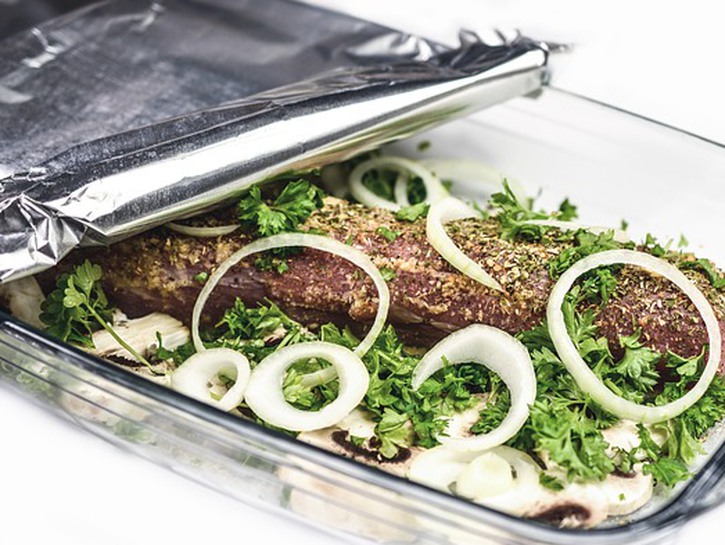Why is there a shiny side and a dull side to aluminum foil?
If you’ve spent any amount of time in the kitchen, chances are you’ve found yourself in need of a hunk of aluminum foil now and then. It’s great stuff. The perfect material for covering up plates of leftovers or saving a piece of pizza for tomorrow’s lunch. You can even use it in the oven.
No doubt at some point, you’ve noticed something curious about aluminum foil. One side is distinctly more shiny than the other. When I grew up, my mother taught me that the proper way to use aluminum foil was shiny side up. But she didn’t tell me why. I assumed it had something to with the conduction of heat, but I always wondered if that was true.
Recently I set out to find out if my mother was correct, and if so, what the two different sides of aluminum foil were actually for. What I found surprised me.
According to the makers of Reynolds Wrap, who are arguably the most famous manufacturers of aluminum foil in the world, the difference is purely visual. That’s right. It doesn’t matter in the slightest if you choose to use aluminum foil shiny side up or shiny side down. Sorry, mom.

The answer lies in the manufacturing process. Aluminum foil is milled in layers. Heat and tension are applied to stretch the foil to the right thickness. Two layers of foil are consistently kept in contact during the milling stage in order to lessen the chances of breakage. The shiny side is the side that didn’t come into contact with another sheet of foil while it was milled.
Now you know it’s okay to go crazy the next time you’re in the kitchen. Use your aluminum foil shiny side up one day, and dull side up on the another. Use it blindfolded if you want to. It won’t make any difference. Your food will taste exactly the same.
